Work Laptop Refresh - 16\" MacBook Pro M1 Pro
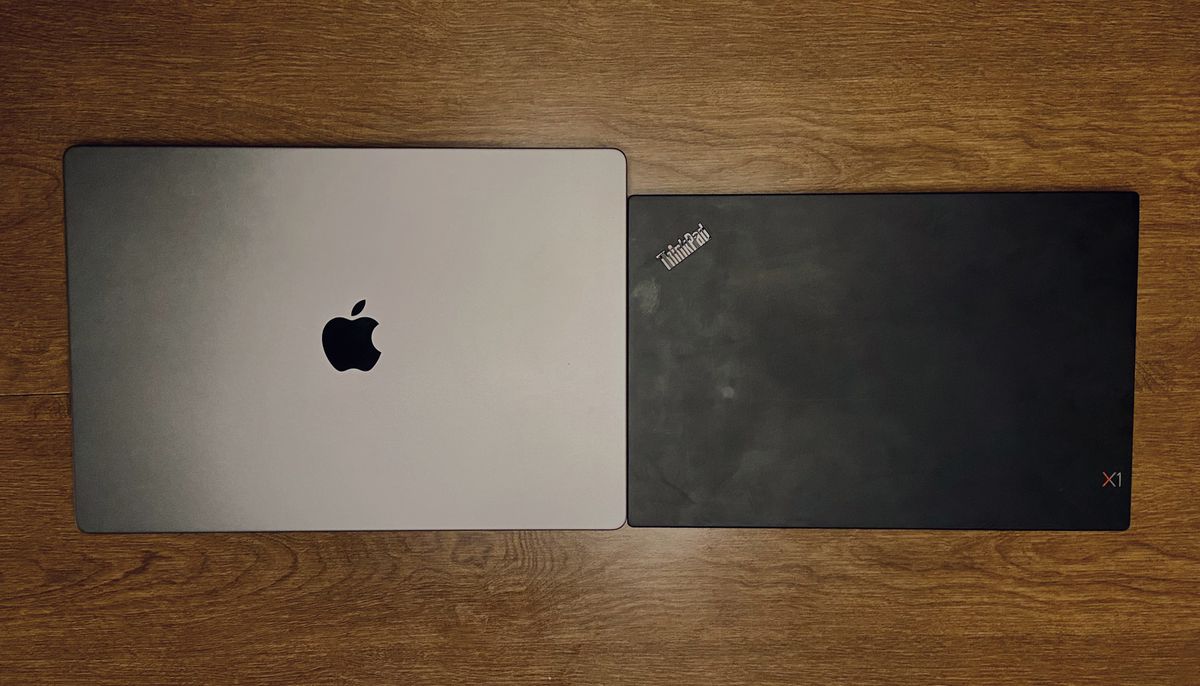
Near the end of last year (2022), I was eligible for a laptop refresh at work. This time around, I chose to replace my 7th generation X1 carbon with the 16" Macbook Pro option.
Laptop Specs
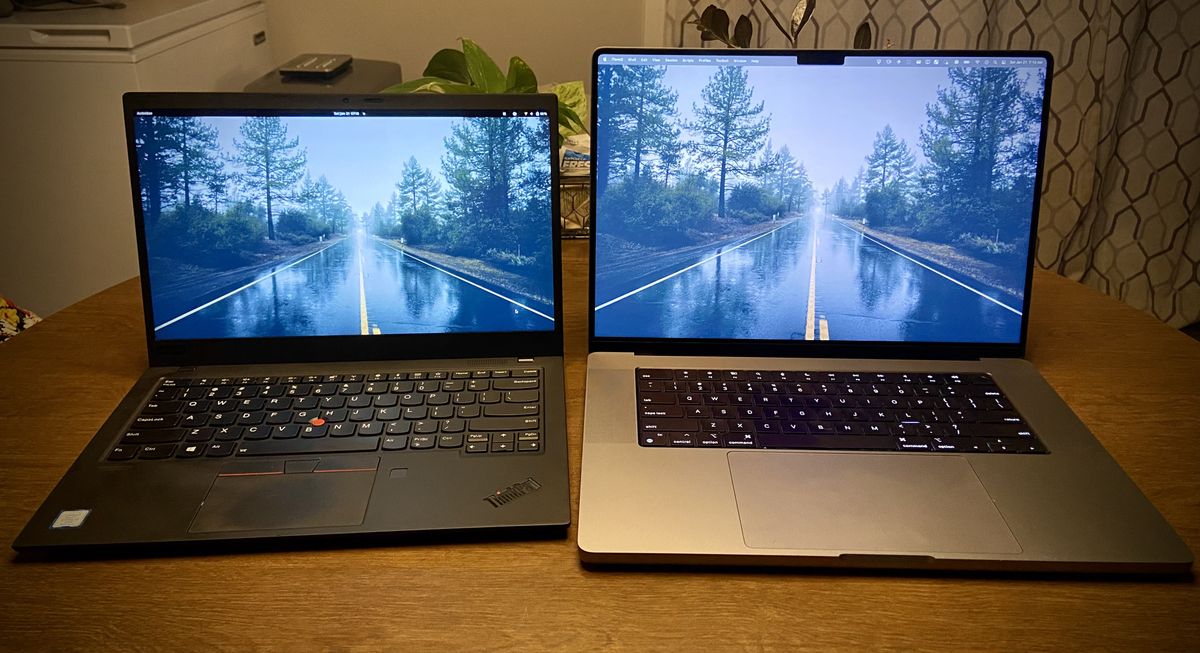
Before proceeding further, here are the specifications of each machine:
x1 Carbon Thinkpad (gen7)
Intel i7-8665U [1.9 Ghz (4.8 Ghz Turbo), 2 cores, 8 threads]
16 GB RAM
250 GB NVME SSD
14" 1920x1080 IPS Display
~2.4 lbs.
12.71" x 8.54" x 0.58"
2021 16" Macbook Pro
M1 Pro (10 CPU Cores [2 efficiency, 8 performance], 16 gpu cores)
16-core Neural Engine
Media engine
32 GB RAM
512 GB NVME SSD
16.2" 3456x2234 Liquid Retina XDR display
4.7 lbs.
14.01" x 9.77" x 0.66"
With that available for reference, lets continue.
Why the switch from Thinkpad to Mac?
I did enjoy the x1 carbon quite a bit, especially compared to the p50 I had previously. However, my work needs have changed over the last few years, and I wanted something more powerful. On top of that, I wanted to try out using a Mac at work. Some of my reasons for the switch to Mac include:
Great Hardware
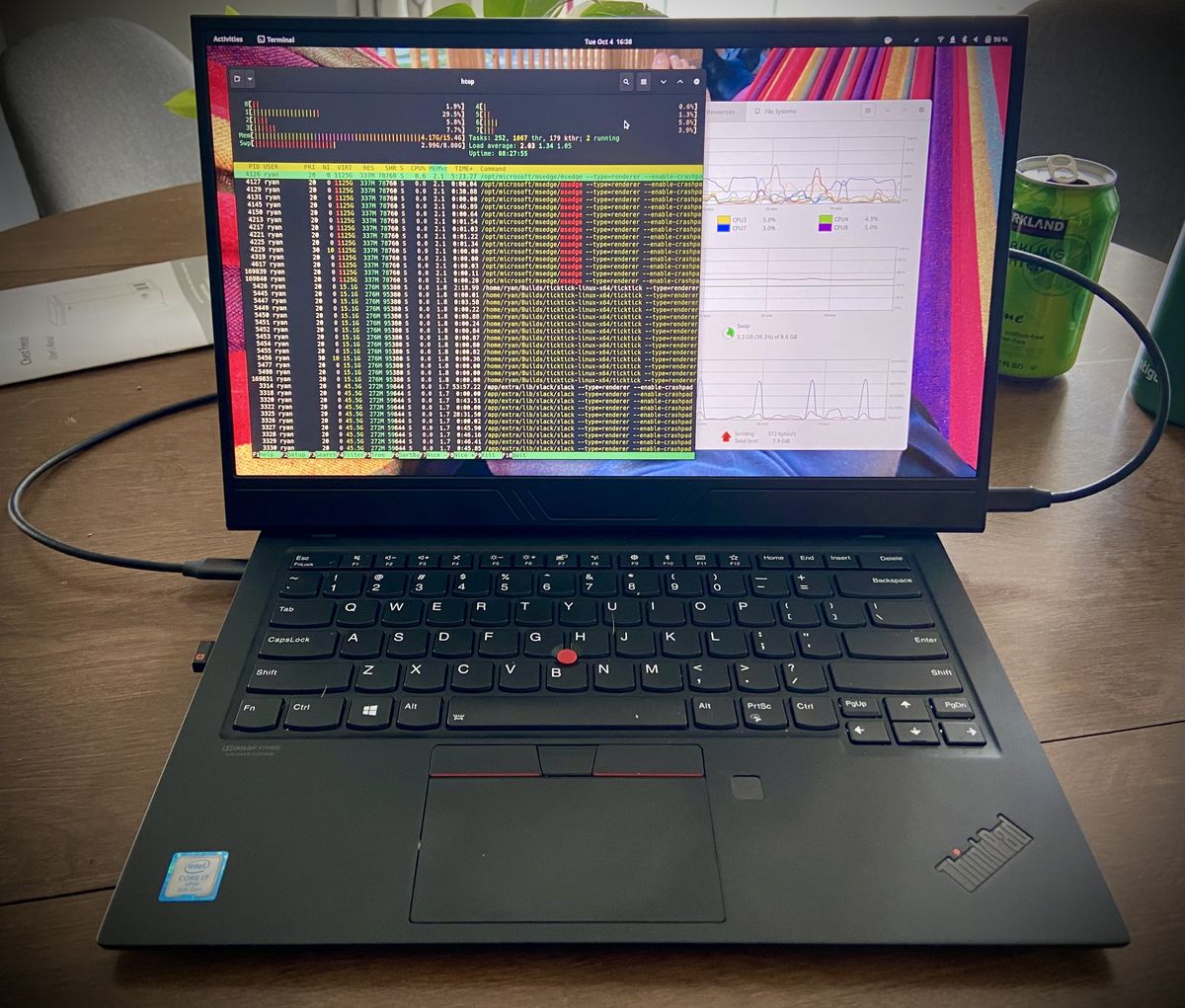
The experience I’ve had with my personal Apple hardware has been very positive. Apple Silicon has performed wonderfully, and I love how low power and silent the chips run. Beyond processors, I have become accustomed to how clear and crisp text appears on a display with 200% scaling. For this reason, I appreciate the retina displays on MacBook Pros. I don’t feel obligated to hook a portable 4k display to my MacBook to make text look great, which I do on the Thinkpad (I know Thinkpads can have 4k displays, but the models we have at work don’t, and even when they did, there usually is a noticeable hit to battery life). Lastly, the speakers in a MacBook Pro are really hard to beat in a laptop, and the remaining periphery components (keyboard, trackpad, webcam, mic) range anywhere from ‘good’ to ‘great’ for what I need in a work device.
As a bonus, Macs work well with other devices in the Apple ecosystem (although I do wish was more open). This includes the Apple Watch, iPhone, iPad, and any airplay 2 supported devices, which I’ve accumulated over the years.
Focus
I need my work machine to help me finish my work. I don’t work on a desktop team, so while playing around and learning details about desktop Linux is fun and can be useful, it doesn’t always help me stay on task with what I need to accomplish for my job. If I’m going to spend time ‘messing around’ learning something, it should probably be things like OpenShift, CICD, Coding, and I guess testing. All of those tasks I can do just fine from a Mac. I don’t even run many local VMs for work currently. If I did, I’d likely stick with Linux.
The truth is, I tend to get distracted tweaking the desktop and underlying system on Linux. While I still do this on macOS, there’s more restraint. In Linux, anything can be hacked together with enough effort (and it sometimes has to be), but in macOS, it is usually a little clearer when your rabbit hole has slammed into a wall. For me to be productive, I need that… when it comes to my desktop OS. I’m still willing to mess around with servers all I want 😆.
A Nice Change
I love Linux, but using it for my desktop OS has become a bit stale for me lately. I do find this strange, because I think the Linux desktop has had many interesting projects over the last few years. Still, it doesn’t allure me like it use to. I don’t feel the desire to distro-hop around anymore (which is good, as I currently have very limited time). While I might occasionally dabble with Silverblue, NixOS, or Elementary OS, I ultimately hop back to Fedora.
The areas I find most interesting about Linux (podman, virtualization, nix) have nothing to do with the desktop.
Opportunity to Learn and Share with Others
Lastly, the Apple Silicon transition is a great time for me to dig into macOS and learn. While core, ‘normal user’ workflows are fine, niche computing can be a different story. Things don’t always work perfectly. Workarounds have to be discovered. Hacks are often relied on. As a daily Linux user over the last 12+ years, this all sounds familiar. While many long-time Mac users might not want to bang their heads inventing solutions to edge cases, I find it to be a great opportunity jump in, investigate, and then share my knowledge with others.
A perfect example of this already in action is my m1 podman post. I have had several of my Red Hat co-workers message me that they found and used that post while searching how to setup podman their new MacBook. I want to do more of that.
Why the 16" over the 14"

At first, I thought the 14" was the obvious choice. It’s just as powerful as the 16", but more portable. Coming from a 2.4 pound 14" X1 Carbon, I didn’t want the switch to be too drastic. Additionally, the computer would be docked to a monitor both when working from home and the office, so there was no real reason to carry a bigger device… right?
Then, during the weeks leading up to when I actually made the decision… my mind shifted and I decided on the 16". Here’s a few reasons why:
Still Portable
The 16" MacBook Pro is still a portable computer. It might be 4.7 lbs, but that’s still a pound lighter than the p50 work computer I had before the x1 carbon, and almost half the weight of my previous personal desktop replacement laptop, the 8.6 pound Bonobo Extreme.
As far as the added weight to my commute… as much as I’d love to walk/bike to work most days, having an infant son that attends a daycare miles from where I live or work means that at least the next few years, my commute is sadly car-based. And my car doesn’t mind the extra size of the 16".
Stand-alone Workstation
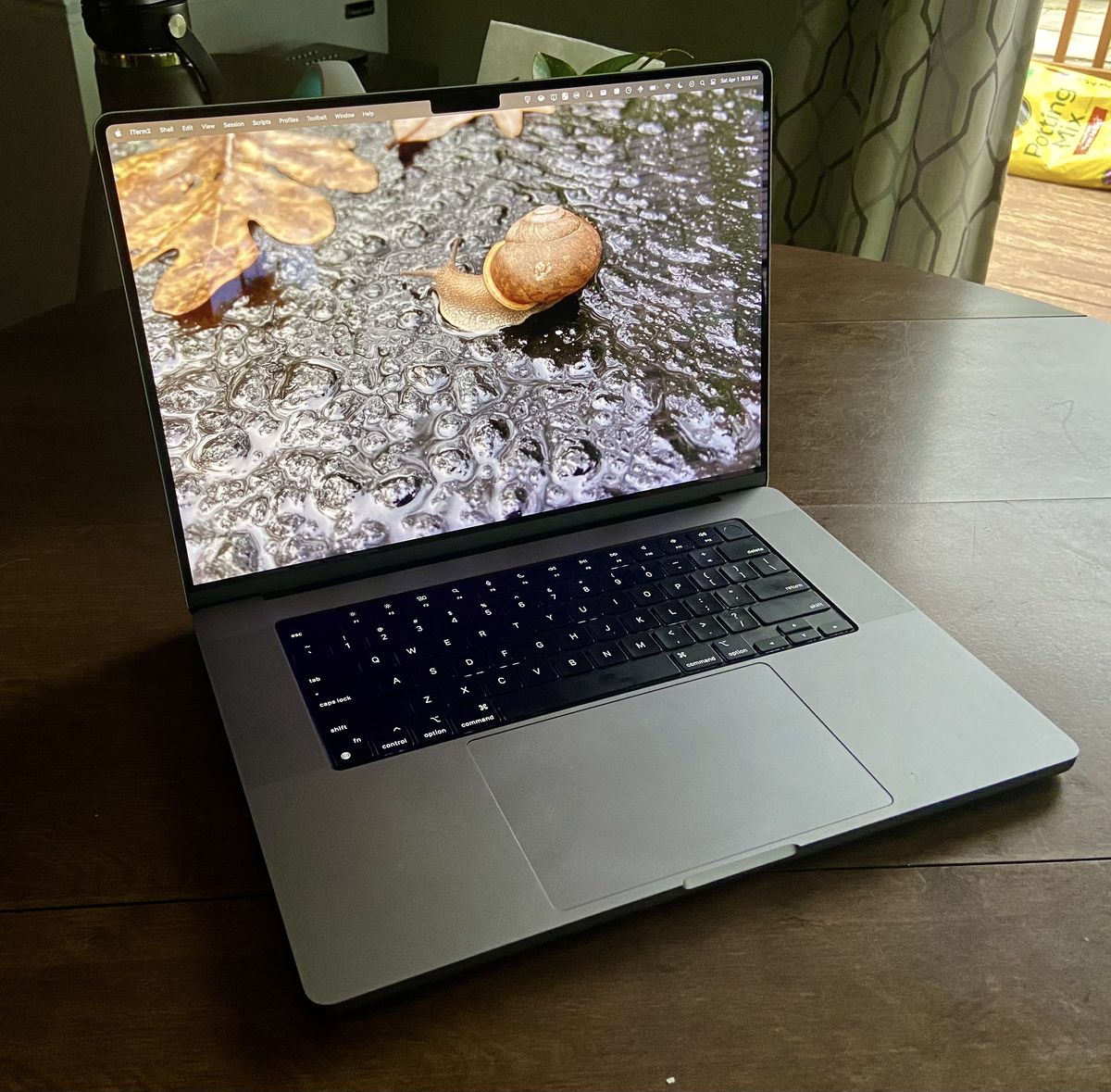
Second, I wanted a machine that functioned well as a stand-alone workstation. I’ve learned that in order to stay motivated, I need to occasionally mix up my surroundings. So, I wanted a computer that I could work on away from my desk, without any compromises. This might be in a meeting room, around the office, or just at my kitchen table.
When placed on a table in front of me, the 16" screen feels perfect. It covers enough of my field of view, and has a resolution that doesn’t feel cramped. Pair that with amazing speakers, and the 16" MBP truly does feel less like a ‘laptop’ and more like a ‘portable workstation’. This is wonderful if I’m tying to work in a meeting room, or anywhere else.
It’s different from what I have
Lastly, and this might be a silly reason, but it’s still something to consider: I already own a 14" M1 Pro Macbook Pro for my personal computer. It’s the base model with the binned cpu/gpu, and only has 16GB of RAM, but as far as the external appearance, it looks the same (except silver) as a work issued one would.
Not only would a 14" work macbook increase the likelihood of me sleepily grabbing the wrong device in the morning, but I would also miss out on a chance to experience working on ‘the other option’. I could learn what the 16" is like to use daily, and how that compares to my 14". I might hate it, but I would know that for a fact, rather than just speculation.
How’s it going?
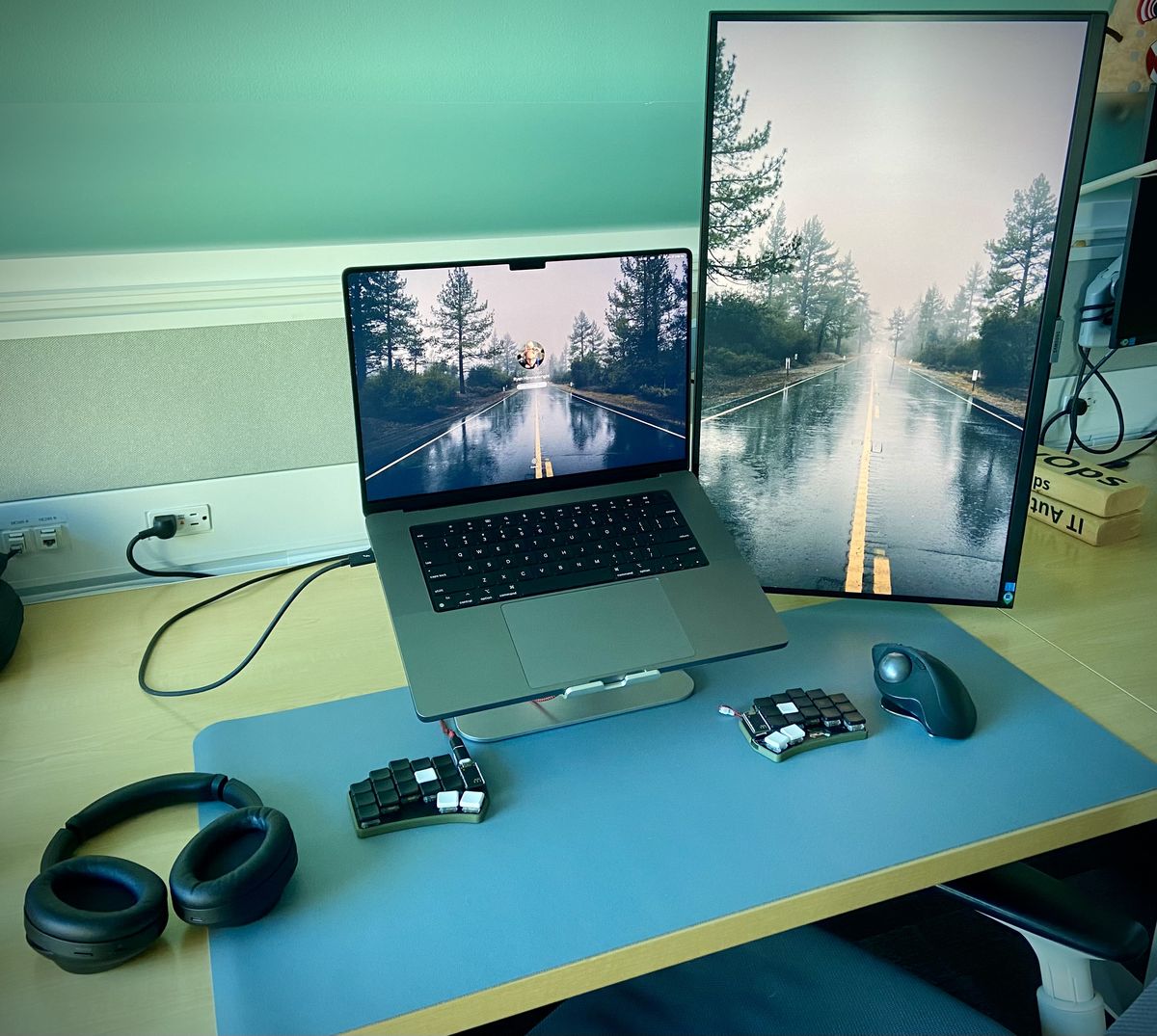
After nearly 3 months with the 16" M1 Pro MacBook Pro as my new work computer, how has it been? Honestly? It’s been delightful. It took a little bit of time to figure out how to setup my work on a Mac, but it wasn’t nearly as bad as I imagined it would be. My experience using the 14" M1 Pro, and switching my dotfiles + dev environments over to nix + home-manager made the transition much smoother.
The hardware has also been perfect. It’s a brilliant machine to use, wherever I want to work. I never feel cramped when using it. In fact, because the screen is so crisp compared to the 27" 1440p office monitor, the majority of the time I’m at my desk I use the laptop display as my main one (on a stand, I still need proper ergonomics), with my desk’s monitor in portrait as a secondary.
To conclude, I am very happy with my decision to go with the 16" Macbook Pro for my work laptop. It is a incredible portable workstation, and was easily the right choice for me, especially for my work device.